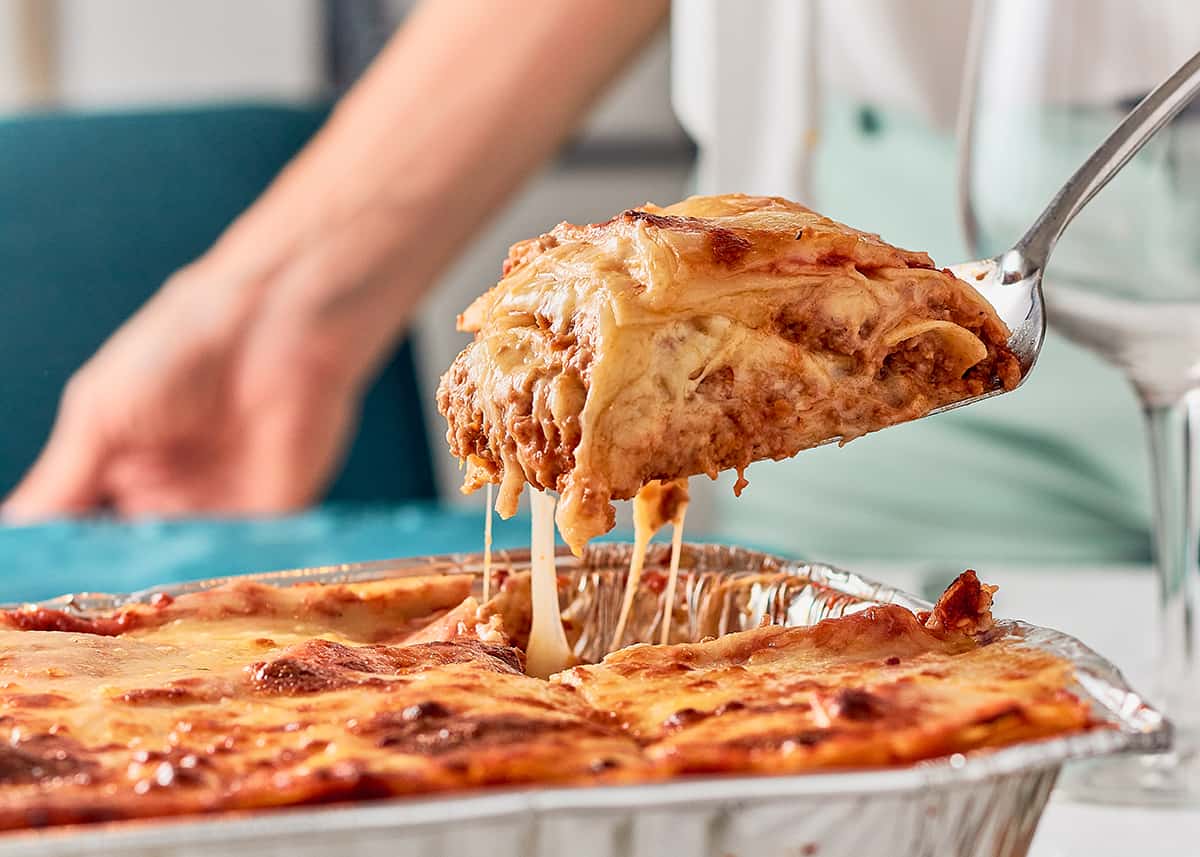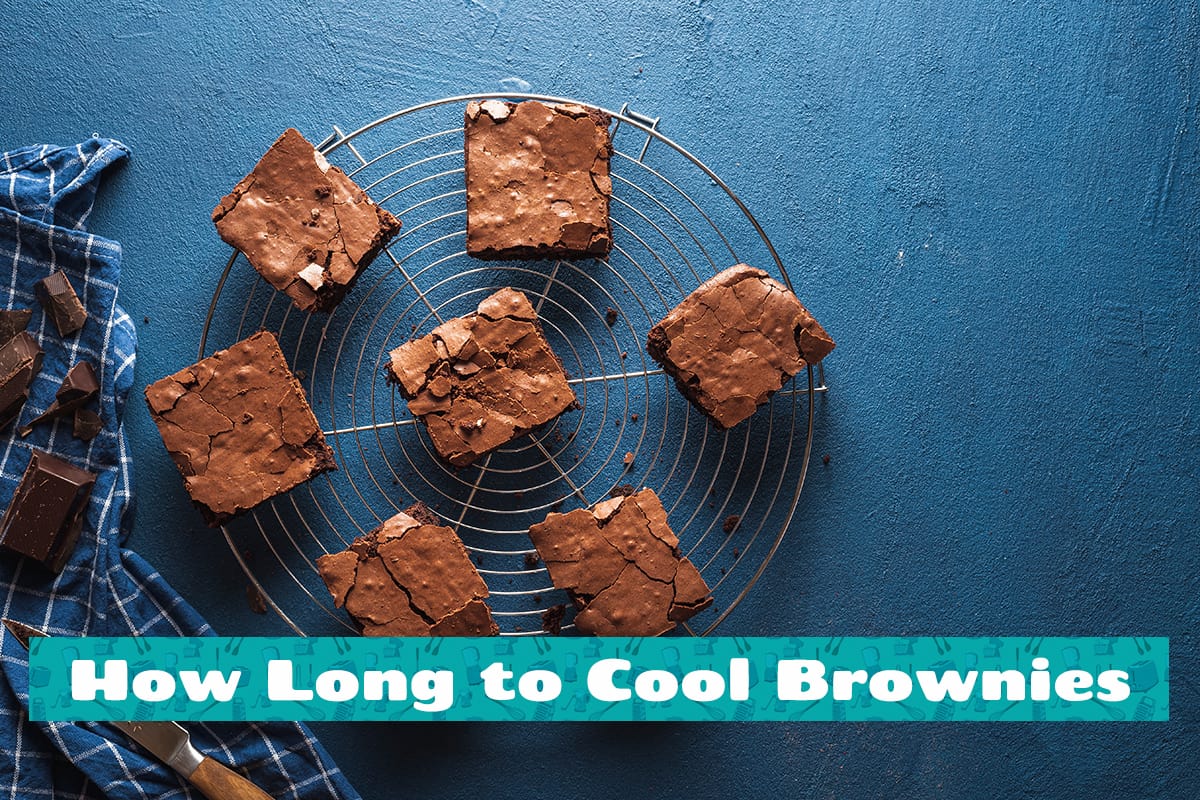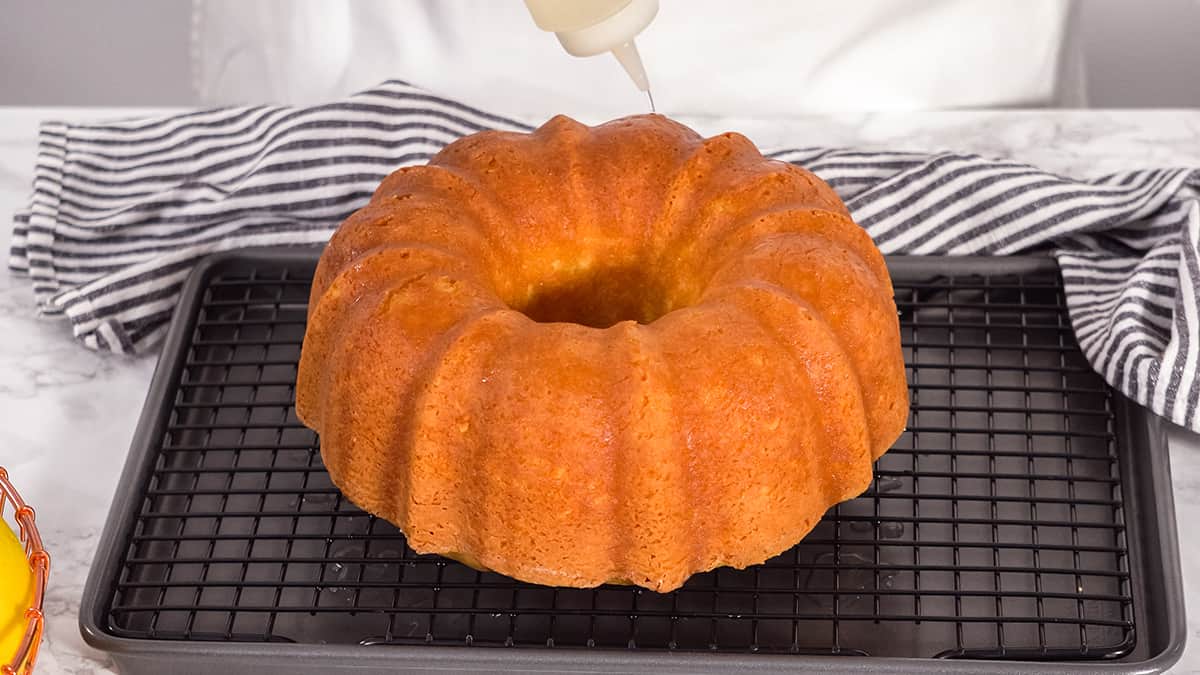Serving the perfect lasagna doesn’t just involve using the best ricotta cheese, lasagna pasta sheets, and the most expensive cans of San Marzano tomato money can afford. You should also be mindful of how hot the lasagna is after pulling it out of the oven. So, how long do you let lasagna rest on the kitchen counter before portioning and serving?
You should let the lasagna rest at room temperature for 10 to 20 minutes, depending on the thickness of the pasta dish.
Why should you let the lasagna rest and how do you properly reheat refrigerated lasagna? These are just a few questions I will answer in the following sections, so keep reading!
How Long Should You Let Lasagna Rest?

After the oven alarm goes off, you need to take the casserole dish out of the oven to stop it from cooking further. However, the moment it pops out of the oven, does that mean you need to cut and serve it immediately?
Certainly not! When the lasagna is done cooking in the oven, you should let it rest at room temperature for between 20 and 30 minutes, depending on how thick the lasagna is. It will take longer for thicker lasagna to cool down due to how large it is.
In fact, I don’t have to be the one to tell you how painful it can be to eat a freshly baked section of lasagna. Imagine what it will do to the roof of your mouth! But that’s not the only reason you should refrain from digging into piping hot lasagna.
When the lasagna is still hot, slicing into it may cause the layers to separate. All the hard work you put into pouring tomato sauce and cheese sauce and laying down sheets of lasagna pasta will be for nought.
All the liquid from the cheese and sauces will come spewing out of the lasagna, greasing up your serving tool and possible forcing the lasagna to fall off.
Can I Put Lasagna in the Refrigerator?

Yes, you can. In fact, some people claim that this is the better solution for serving lasagna since you won’t have to worry about the layers separating from each other and creating a greasy, soupy mess.
So, when should you put it in the refrigerator? Only when the lasagna has come down to room temperature. This can take 1 to 2 hours, again, depending on the thickness of the lasagna.
The problem with sticking a freshly baked lasagna in the fridge is that the residual steam hiding between the layers of pasta and in the sauces will have nowhere to vent except inside the fridge. When this happens, you put the fridge’s temperature at risk of rising to the “danger zone” (between 41 and 135°F).
Food that has been exposed to the danger zone for extended periods of time will begin to grow bacteria, which will leave it totally inedible. So, when cooling down the lasagna, make sure it doesn’t stay at room temperature for too long before sticking it in the refrigerator.
Should I Cover a Resting Lasagna?
As you are probably aware, when baking a lasagna, you should cover the top with a layer of aluminum foil for the final 20 minutes. That way, the heat from the oven will not cause the lasagna to lose too much moisture and become a hardened mess.
But should you cover lasagna with a aluminum foil when it’s resting on the kitchen counter? There are two schools of thought.
Some people say yes, you should, but you should poke tiny holes into the aluminum foil as steam vents. That way, steam venting from the lasagna will have somewhere to go. This also lets you better manage how quickly the lasagna drops in temperature. So, if you are planning on leaving the kitchen for 30 minutes or longer, you should leave it covered. That way, the lasagna will retain some of its heat when it’s time to serve.
On the other hand, you shouldn’t cover the lasagna dish in aluminum foil if and only if you plan on serving it as soon as possible. It’s completely fine for the lasagna to dry out slightly as it vents steam hiding from between the layers of pasta. Since the lasagna will become cooler more quickly, you can section and serve it up in less time.
How to Reheat Chilled Lasagna?

The problem with cooled lasagna is that it may become moistened due to the humidity level inside the refrigerator. That’s why I highly recommend serving the lasagna on the day you cook it. However, if you have leftover lasagna, or if you pre-baked a dish of lasagna for an upcoming dinner party, you can safely reheat it without sacrificing too much of its original flavor.
Before attempting anything, make sure you take the lasagna out of the fridge (or freezer) and let it come up to room temperature.
Oven/Toaster Oven
This is arguably the best method you can do since it will bring the lasagna up to temp slowly and consistently.
First, preheat your oven to 350°F (325°F for a toaster oven). Cover the lasagna pan with aluminum foil before sticking it inside the oven and let it bake for around 30 minutes. If you have a thermometer probe, when the lasagna reaches an internal temperature of 165°F, it’s ready.
Microwave
This is the best method if you want to serve your chilled lasagna as soon as possible.
Cut a section of the lasagna and place it on a microwave-safe dish. Drizzle the top with 2 tablespoons of water. Take a toothpick or fork and poke the top of the lasagna about halfway deep. Microwave it for 5 minutes on high and check whether the center is done. If it has an internal temperature of 165°F, it’s ready to take out of the microwave.
Skillet
This is a strange yet reliable way to bring your lasagna up to temp if you don’t mind a bit of moisture.
Take a section of the lasagna and place it on a nonstick skillet. Drizzle 1/8 of a cup of water over the lasagna before placing the skillet on the stove at medium-high heat. Cook until the water begins to boil—about 5 minutes. Lower the stove to low heat, cover the skillet, and continue cooking for 15 to 20 minutes or until the lasagna has an internal temperature of 165°F.






